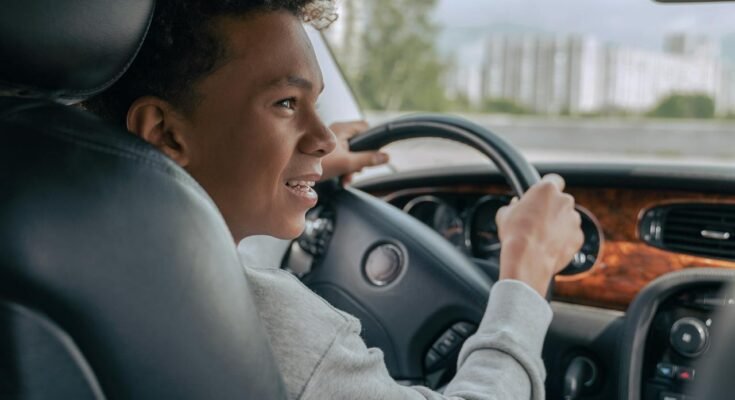Of course, driving a car requires understanding the workings of various controls, road rules, and safety procedures. Below are tips on how to start driving, step by step:
1. The Controls of the Car
to Be UnderstoodThus:
Steering: Direction of the car.
Accelerator: Increase speed when pressed down.
Brake Pedal: Slow down or stop the car!
Clutch (Manual Cars Only): When changing gears.
Gear Stick: Transmission (Park, Reverse, Neutral, Drive-automatic).
Handbrake: To keep the car stationary when parked!MirrorsPurely meant for traffic behind.viewed!
2. Turning the Car OnManual Car:
1. Press down the clutch pedal all the way!
2. Put the key in and turn it to start the engine.
3. Shift into first gear, let the hand brake go slowly, and then let the clutch up while pressing the gas.
3.Automatic Car:
1. Press down on the brake!
2. Start the engine!
3. Move to drive “D”!
4. SeeSMoothly let go of the brake and press the gas!
Movement and Control of Speed. Press the accelerator gently to move it ahead. Drive steadily without sudden acceleration. To slow down or stop, simply use the brake smoothly
4. Turning and Changing Lanes.
Use turn-signal lamps (indicators) to signal your intention to turn or change lanes. Before doing so, check your mirrors and blind spots. Slow down before turning into a street.
5. Parking.
Use the handbrake when you park. Shifting to “P” (Park) mode in an automatic car. In a manual car, leave it in first gear or reverse upon parking.
6. Road Safety and Traffic Rules.
Each set of speed limits and traffic signs should be followed. Gasoline is always used with the safety belt. A safe following distance should be kept from other vehicles. Avoid distractions, like telephoning when driving. Follow the right-of-way rules at intersections. Would you like any specific tips on driving? For instance, highway driving or parking techniques?
7. Before Driving Make sure you are comfortable with the driving position,
as well as conscious of the surroundings before actual driving starts.
A. Seat and Mirror
Adjustment Your body should be in a comfortable position while your hands can rest on the steering wheel without tension.Your seat should be adjusted, such that you comfortably reach the pedals.The view through the mirrors should be unobstructed to allow you to see clear behind and beside. The rearview and side mirrors should be properly angled when you make your actual trip.
B. Put on Your Seatbelt
Be sure to put seatbelts on before starting the car.Likewise do your passengers.
C. Condition of the Car.
Be sure that the parking brake is not set before driving.Clock the gas, pressure on tires, lights on dashboard, warn.Certain that the headlights, turn signals, and brake lights are in a good state.
Starting and Driving
A. Starting an Automatic Car
1. step on the brake with your right foot.
2. Insert the key into the ignition (or press the start button if it has one in a keyless car).
3. Shift to Drive, or D, with your foot still on the brake.
4. Release the brake slowly while applying the accelerator to start moving:
B. Starting a Manual Car
1. press clutch with your left foot while pressing brake with your right.
2. insert the key and start the engine.
3. into 1st gear with the clutch still pressed down.
4. release clutch gradually while pressing auto gently to move forward.
